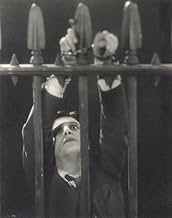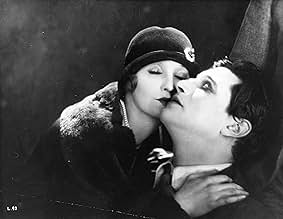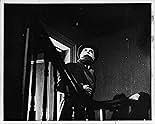IMDb रेटिंग
7.3/10
14 हज़ार
आपकी रेटिंग
अपनी भाषा में प्लॉट जोड़ेंA landlady suspects that her new lodger is the madman killing women in London.A landlady suspects that her new lodger is the madman killing women in London.A landlady suspects that her new lodger is the madman killing women in London.
June Tripp
- Daisy - A Mannequin
- (as June)
Wallace Bosco
- Pub Customer
- (बिना क्रेडिट के)
Daisy Campbell
- Mother
- (बिना क्रेडिट के)
Maudie Dunham
- First Victim
- (बिना क्रेडिट के)
Reginald Gardiner
- Dancer at Ball
- (बिना क्रेडिट के)
Eve Gray
- Showgirl Victim
- (बिना क्रेडिट के)
Alfred Hitchcock
- Extra in Newspaper Office
- (बिना क्रेडिट के)
Alma Reville
- Woman Listening to Wireless
- (बिना क्रेडिट के)
फ़ीचर्ड समीक्षाएं
it is a real special film. first - for the status of early Hitchcock. the second - for Ivor Novello performance who seems be more than a good one but the right piece for the balance of film. the story is predictable and this fact did it charming. because old themes are mixed with smart images. because the romanticism and the touching scenes reminds the popular literature of XIX century. because it is fresh and naive and seductive and dark. and because it is a fascinating clue for discover the art of its director in new and interesting perspective.
A story loosely based on Jack the Ripper. In London a killer called the Avenger goes around killing blond-haired girls. Around this time Mr. and Mrs. Bunting take in a lodger (Ivor Novello). He's quiet but very odd. He takes a liking to their blond-haired daughter Daisy (June Tripp). But then the Buntings begin to suspect that he may be the Avenger and want Daisy as his next victim...
Hitchcock's first thriller and a very good one. Very few title cards are used--he uses images to carry the film. Sometimes it works but, more than once, I was confused. It was one of his first films though so this can be forgiven. It also moves a bit too slow. But it's still worth seeing.
You can see the beginnings of his later work peeking through and there are some sequences so well directed that they're stunning (the one where Novello and Tripp kiss is just SO beautiful). Also the acting is actually quite good by everybody--especially Novello. He was a box office draw in the 1920s and it's easy to see why. The man is not only a good actor he was undeniably beautiful. It's easy to see why he was once called one of the most beautiful men alive.
Novello was gay--I wonder if Hitch knew that. There are two lines in this film where people talk about his character--"Good thing he doesn't like girls" and "Even if he is a bit queer". These lines are quite interesting now--I wonder if they were put in on purpose or just happened to be written without anyone knowing. Interesting to think about...
Hitchcock's first thriller and a very good one. Very few title cards are used--he uses images to carry the film. Sometimes it works but, more than once, I was confused. It was one of his first films though so this can be forgiven. It also moves a bit too slow. But it's still worth seeing.
You can see the beginnings of his later work peeking through and there are some sequences so well directed that they're stunning (the one where Novello and Tripp kiss is just SO beautiful). Also the acting is actually quite good by everybody--especially Novello. He was a box office draw in the 1920s and it's easy to see why. The man is not only a good actor he was undeniably beautiful. It's easy to see why he was once called one of the most beautiful men alive.
Novello was gay--I wonder if Hitch knew that. There are two lines in this film where people talk about his character--"Good thing he doesn't like girls" and "Even if he is a bit queer". These lines are quite interesting now--I wonder if they were put in on purpose or just happened to be written without anyone knowing. Interesting to think about...
This movie is fantastic and fascinating mostly because of its director, but it would be fun either way. I'd say that it's better than many films of the same period, but not to the same extreme degree that Hitchcock's movies eventually achieved.
You can see it's his work, though. Hitchcock knew that what made a suspenseful movie good had nothing to do with gore or loud noises, and this shows even in his early work. The Lodger has a distinctly Hitchcock feel to it--fun and scary--and it's interesting to see how he gets around the lack of sound, considering the fact that most (all?) of his other films were talkies.
You can see it's his work, though. Hitchcock knew that what made a suspenseful movie good had nothing to do with gore or loud noises, and this shows even in his early work. The Lodger has a distinctly Hitchcock feel to it--fun and scary--and it's interesting to see how he gets around the lack of sound, considering the fact that most (all?) of his other films were talkies.
This is the first real Hitchcock movie. The one in which he really starts to use all his abilities, although we can see that they are still not mature yet. It's very interesting because he makes a lot of experiments in this film, like the glass ceiling, and we see how hard he wanted, at the time, to really make his mark, to stand above the rest. Although the ending is not very good, the first 20 minutes of The Lodger are impressive, with Hitchcock slowly telling us (visually, of course) about the killer and his particularities, until the arrival of Ivor Novello. A must-see picture to any real Hitchcock fan
... a thriller based on the book by Marie Belloc Lowndes. A mysterious killer known as "the Avenger" is terrorizing the streets of London. He targets women with blonde, curly hair, and the police are at a loss to stop him. Meanwhile, a sketchy new lodger (Ivor Novello) takes up residence in the rooming house of a landlady (Marie Ault) and her husband (Arthur Chesney). The landlady becomes convinced that the lodger is really the Avenger, which proves problematic as the lodger has caught the attention of the landlady's daughter, Daisy (June Tripp). Also featuring Malcolm Keen as Daisy's policeman boyfriend.
Inspired by the Jack the Ripper case, this was Hitchcock's first suspense picture, and was an immediate success, with one critic at the time even calling this the "best British film ever made". This is my second time watching it, and the first time watching the beautiful BFI restoration. The quality of the print is outstanding, and the commissioned score is excellent. Hitchcock uses a number of visually impressive double exposure shots, and I also liked the stylized intertitles. I still find the movie a tad too long, and Novello, who looks striking, is a silent-era-style ham, but it's still worth checking out for silent film fans. Arthur Chesney, playing the landlord, was the lookalike younger brother of Edmund Gwenn, and the former husband of Estelle Winwood.
Inspired by the Jack the Ripper case, this was Hitchcock's first suspense picture, and was an immediate success, with one critic at the time even calling this the "best British film ever made". This is my second time watching it, and the first time watching the beautiful BFI restoration. The quality of the print is outstanding, and the commissioned score is excellent. Hitchcock uses a number of visually impressive double exposure shots, and I also liked the stylized intertitles. I still find the movie a tad too long, and Novello, who looks striking, is a silent-era-style ham, but it's still worth checking out for silent film fans. Arthur Chesney, playing the landlord, was the lookalike younger brother of Edmund Gwenn, and the former husband of Estelle Winwood.
क्या आपको पता है
- ट्रिवियाFor the opening of this movie, Sir Alfred Hitchcock wanted to show the Avenger's murder victim being dragged out of the Thames River at night with the Charing Cross Bridge in the background, but Scotland Yard refused his request to film at the bridge. Hitchcock repeated his request several times, until Scotland Yard notified him that they would "look the other way" if he could do the filming in one night. Hitchcock quickly sent his cameras and actors out to Charing Cross Bridge to film the scene, but when the rushes came back from the developers, the scene at the bridge was nowhere to be found. Hitchcock and his assistants searched through the prints, but could not find it. Finally, Hitchcock discovered that his cameraman had forgotten to put the lens on the camera before filming the night scene.
- गूफ़When The Lodger (Ivor Novello) and Daisy (June Tripp) are playing chess, but the board is set up inappropriately. The square in the right corner should always be white. In this case, the bottom-right square is dark (black). This is the most obvious when The Lodger (Ivor Novello) is poking the coals in the fireplace.
- भाव
Joe Betts: Does this lodger of yours mean any harm to Daisy?
The Landlady: Don't be silly, Joe. He's not that sort. Even if he's a bit queer, he's a gentleman.
- क्रेज़ी क्रेडिटClosing credits: Thank you to everyone who supported the BFI's Silent Hitchcock restoration project.
- इसके अलावा अन्य वर्जनThe original version of The Lodger directed by Alfred Hitchcock in 1926 was restored in 1999 in honor of the directors 100th anniversary. The film was restored by the British National Film & TV Archives and a new score by Ashley Irwin was commissioned by ZDF/ARTE (Germany) and premiered on August 13, 1999 (what would have been Hitchcock's 100th birthday).
- कनेक्शनEdited into Histoire(s) du cinéma: Une vague nouvelle (1999)
टॉप पसंद
रेटिंग देने के लिए साइन-इन करें और वैयक्तिकृत सुझावों के लिए वॉचलिस्ट करें
विवरण
- रिलीज़ की तारीख़
- कंट्री ऑफ़ ओरिजिन
- भाषा
- इस रूप में भी जाना जाता है
- The Lodger
- फ़िल्माने की जगहें
- उत्पादन कंपनियां
- IMDbPro पर और कंपनी क्रेडिट देखें
बॉक्स ऑफ़िस
- बजट
- £12,000(अनुमानित)
- दुनिया भर में सकल
- $83,568
- चलने की अवधि
- 1 घं 32 मि(92 min)
- रंग
- ध्वनि मिश्रण
- पक्ष अनुपात
- 1.33 : 1
इस पेज में योगदान दें
किसी बदलाव का सुझाव दें या अनुपलब्ध कॉन्टेंट जोड़ें
















